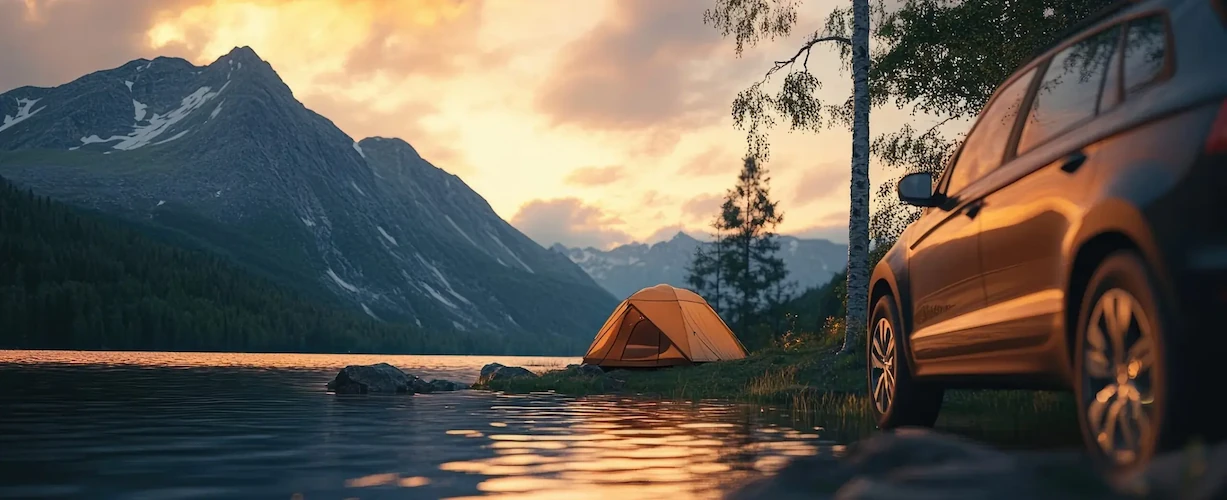 One of the most important things you should pay attention to – especially when you’re on the road – is safety. Most people know and/or practice common safety habits when they get behind the wheel, such as wearing a seatbelt, keeping both hands on the wheel as often as possible, not fiddling with the radio or sending a text. It’s common sense to do all of that, right?
One of the most important things you should pay attention to – especially when you’re on the road – is safety. Most people know and/or practice common safety habits when they get behind the wheel, such as wearing a seatbelt, keeping both hands on the wheel as often as possible, not fiddling with the radio or sending a text. It’s common sense to do all of that, right?
Despite our society being so safety-oriented nowadays (e.g., the coffee cup you get from McDonald’s has a “Warning: Hot!” label on it), most drivers tend to forget one simple but potentially life-saving safety step: having an emergency roadside kit. Maybe you think it’s unnecessary to have one, or maybe you think it’s too expensive, but having an emergency roadside kit in your rental car could be the difference between a really long night and having to hold a funeral.
Emergency Roadside Kits and Your Rental Car
Just because you’ll be driving a different car than you normally do doesn’t mean you should skimp on safety. It’s fairly common knowledge that rental cars are often treated by their temporary drivers much like demolition derby cars are treated – all it takes is for one person to purchase the insurance upsell and feel like they’re driving on a NASCAR track to turn your sweet rental car into an insane, nuclear-powered wrecking ball of doom.
In essence, because you don’t know who’s driven your rental car before you or where they’ve been, you can’t have the same type of faith in the car not failing on you the way you might with your own meticulously maintained vehicle. And even if you knew it had been taken care of, the simple fact of the matter is that all complex machinery is prone to failure at any time, and the last thing you need is to be stranded in the middle of nowhere on your vacation or business trip. This is why it’s never a bad idea to keep an emergency roadside kit handy for whenever you need to rent a car.
What Makes a Good Emergency Roadside Kit for My Rental Car?
There’s any number of things that you can put into an emergency roadside kit. Some of them are for comfort purposes, but most are there to help you survive in the unlikely event that something catastrophic happens to you. A good emergency roadside kit can include:
• Non-perishable food, such as granola bars, energy bars, cereal bars, or
• Plastic water bottles (change them every six months)
• Blankets (one thin and one thicker)
• Extra shoes and clothing
• First aid kit with a seatbelt cutter
• First aid guide
• Scissors
• Gloves
• Cotton applicators
• Safety pins
• Chapstick
• Sting relief pads
• Antiseptic towelettes
• Alcohol pads
• Triple antibiotic ointment
• Bandages
• Gauze pads
• Gauze rolls
• Adhesive tape
• A small shovel, scraper, and snow brush
• A candle in a deep can, and matches
• A wind-up flashlight
• A whistle, in case you need to attract attention
• Road maps
• A copy of your emergency plan and personal documents
Some other handy items to keep (in the trunk) in your rental car can include:
• Sand, salt, or non-clumping cat litter
• Antifreeze
• Windshield washer fluid
• Jumper cables
• Warning lights, reflective triangles, or road flares
• Temporary tire repair kit (if you can find one)
• Five-gallon gas can
• Portable jump-starting machine (in case you don’t have jumper cables)
Roadside emergency kits can be light and portable, and can be easily packed into a small duffel bag. Just keep one by the door and grab it whenever you’re headed someplace where you’ll need to pick up a rental car.
